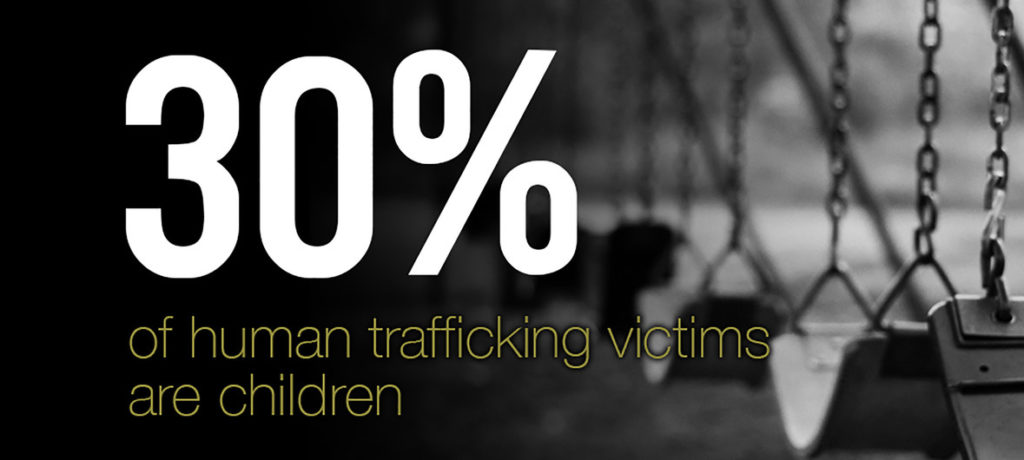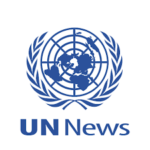Rising Human Trafficking Takes on ‘Horrific Dimensions’: Almost a Third of Victims Are Children
HUMAN RIGHTS, UNITED NATIONS, 14 Jan 2019
UN News – TRANSCEND Media Service
7 Jan 2019 – A new UN report published today shows that human trafficking is on the rise and taking on “horrific dimensions”, with sexual exploitation of victims the main driver. Children now account for 30 per cent of those being trafficked, and far more girls are detected than boys.
The study from the United Nations Office on Drugs and Crime (UNODC, draws on information from 142 countries, examining trafficking trends and patterns. Yury Fedotov, Executive Director of UNODC, said that “human trafficking has taken on horrific dimensions as armed groups and terrorists use it to spread fear and gain victims to offer as incentives to recruit new fighters,” citing child soldiers, forced labour and sexual slavery as examples.
While the average numbers of reported victims had fluctuated during the earlier years for which UNODC had collected data, the global trend has shown a steady increase since 2010. Asia and the Americas are the regions which have seen the largest increase in the numbers of victims detected, which may be explained by improved methods of detecting, recording and reporting data on trafficking – or a real increase in the number of victims.
UNODC collected information about 225,000 victims of trafficking detected🌍betw 2003-2016.
Today the Global Report on Trafficking in Persons 2018 will be launched @UN_Vienna w/@YuryFedotov & @Karin_Kneissl @MFA_Austria
Full report: https://t.co/7u4z3kZvrF #EndHumanTrafficking pic.twitter.com/sxaZP3VwuR— UN Office on Drugs and Crime (@UNODC) January 7, 2019
Most victims of trafficking detected outside their region of origin are from East Asia, followed by sub-Saharan Africa: whilst there has been an increase in the number of convictions for trafficking in these regions, the study concluding that large areas of impunity still exist in many Asian and African countries, and conviction rates for trafficking remain very low.
Trafficking for sexual exploitation is the most prevalent form in European countries, whilst in sub-Saharan Africa and the Middle East, forced labour is the main factor driving the illicit trade. Women and girls make up most trafficking victims worldwide: almost three-quarters of them are trafficked for sexual exploitation, and 35 per cent (women and girls) are trafficked for forced labour.

Abused and trafficked children are provided with support at a centre in Almaty city, Kazakhstan. © UNICEF/Pirozzi
Armed conflict the focus
The main focus of the report is on the impact of armed conflict on trafficking. In conflict zones, where the rule of law is weak, and civilians have little protection from crime, armed groups and criminals may take the opportunity to traffic them. One example given in the study is the phenomenon of girls and young women in refugee camps in the Middle East being “married off” without their consent and subjected to sexual exploitation in neighbouring countries.
Addressing human trafficking is a key part of the UN Sustainable Development Agenda, requiring Member States to monitor progress in tackling the problem, and report the number of victims by sex, age and form of exploitation.
However, significant gaps in knowledge remain, with many countries in sub-Saharan Africa, South Asia and some parts of East Asia still lacking sufficient capacity to record and share data on trafficking in persons. “This report shows that we need to step up technical assistance and strengthen cooperation, to support all countries to protect victims and bring criminals to justice, and achieve the Sustainable Development Goals,” said Mr. Fedotov.

#EndHumanTrafficking visual. According to the UNODC Global Report on Trafficking in Persons, 30% of human trafficking victims are children. UNODC
_____________________________________________________
Past Stories on This Issue:
UN report sheds light on ‘unimaginable horrors’ faced by migrants and refugees in Libya, and beyond 20 December 2018 – Migrants and refugees are being subjected to “unimaginable horrors” from the moment they enter Libya, throughout their stay in the country and – if they make it that far – during their attempts to cross the Mediterranean, according to a report released on Thursday, by the United Nations political mission in Libya (UNSMIL) and the UN human rights office (OHCHR).
DISCLAIMER: The statements, views and opinions expressed in pieces republished here are solely those of the authors and do not necessarily represent those of TMS. In accordance with title 17 U.S.C. section 107, this material is distributed without profit to those who have expressed a prior interest in receiving the included information for research and educational purposes. TMS has no affiliation whatsoever with the originator of this article nor is TMS endorsed or sponsored by the originator. “GO TO ORIGINAL” links are provided as a convenience to our readers and allow for verification of authenticity. However, as originating pages are often updated by their originating host sites, the versions posted may not match the versions our readers view when clicking the “GO TO ORIGINAL” links. This site contains copyrighted material the use of which has not always been specifically authorized by the copyright owner. We are making such material available in our efforts to advance understanding of environmental, political, human rights, economic, democracy, scientific, and social justice issues, etc. We believe this constitutes a ‘fair use’ of any such copyrighted material as provided for in section 107 of the US Copyright Law. In accordance with Title 17 U.S.C. Section 107, the material on this site is distributed without profit to those who have expressed a prior interest in receiving the included information for research and educational purposes. For more information go to: http://www.law.cornell.edu/uscode/17/107.shtml. If you wish to use copyrighted material from this site for purposes of your own that go beyond ‘fair use’, you must obtain permission from the copyright owner.
2 Responses to “Rising Human Trafficking Takes on ‘Horrific Dimensions’: Almost a Third of Victims Are Children”
Read more
Click here to go to the current weekly digest or pick another article:
HUMAN RIGHTS:
- US “Relocates” Iraqi Refugee to Rwanda via New Diplomatic Arrangement
- How the Human Rights Industry Manufactures Consent for “Regime Change”
- Genocide Emergency: Gaza and the West Bank 2024
UNITED NATIONS:

[…] originale: Rising Human Trafficking Takes on ‘Horrific Dimensions’: Almost a Third of Victims Are Children Traduzione di Miki Lanza per il Centro Studi Sereno […]
[…] originale: Rising Human Trafficking Takes on ‘Horrific Dimensions’: Almost a Third of Victims Are Children Traduzione di Miki Lanza per il Centro Studi Sereno […]